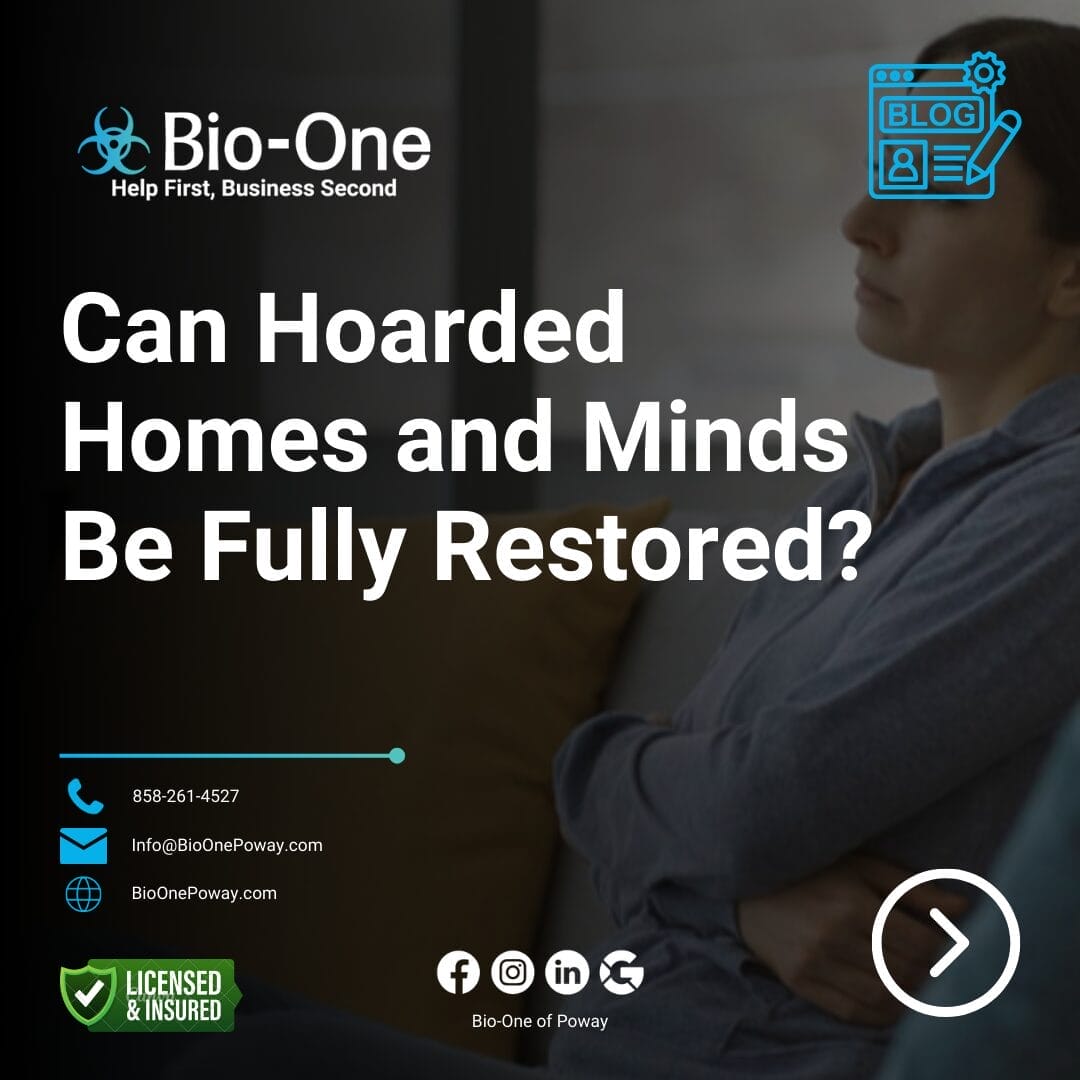
When we hear the term 'hoarding,' we often conjure images of cluttered homes, newspapers stacked to the ceiling, and pathways lined with belongings. For those dealing with hoarding tendencies or living with a hoarder, these scenes are not just a specter; they're a stark reality. The battle against hoarding is multi-faceted, challenging, and deeply personal. It's a fight that's both outside—against the physical accumulation of stuff—and inside—where emotional motivations run deep. Now... Can hoarding be cured?
In this blog, we'll explore the complexities of hoarding. From the psychology of hoarding to real-life success stories, we're here to let you know there is a positive outcome for hoarding. Trust us!
Disclaimer: Please note that while we share insights and stories related to hoarding cleanup and recovery, we are not mental health professionals. Our intention in presenting this material is to create awareness and offer support from a cleanup perspective.
What drives someone to hoard? Understanding hoarding begins with recognizing that those who struggle with it rarely do so from a simple desire to collect or a reckless disregard for cleanliness. For many, hoarding provides a sense of safety or control, and possessions are imbued with deep personal significance.
Collectors and hoarders both gather items, but the difference lies in the cognitive relationship to those items. Collectors are often organized and strategic, taking joy in the aesthetic or emotional value of their curated collections. Hoarders, on the other hand, face challenges in making decisions about what to keep and what to discard, and their accumulation typically leads to dysfunction within the living space.
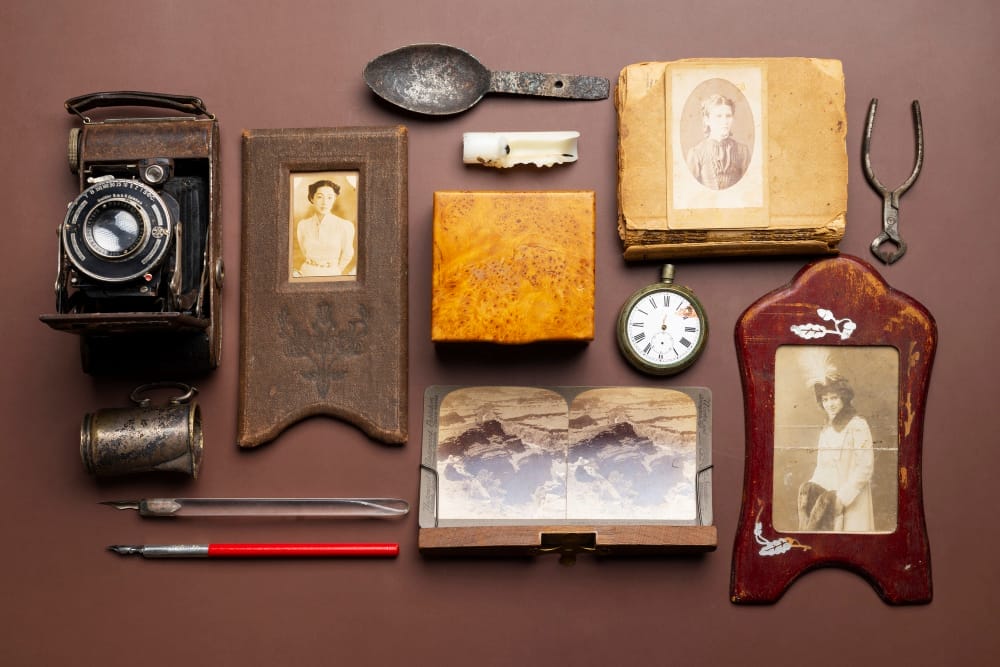
The effects of hoarding extend beyond the individual. Hoarded homes bear the brunt of the condition, with space often becoming unusable and basic living conditions compromised.
From fire hazards and structural damage to health risks, the physical consequences of hoarding are dire. Vermin infestations, mold growth, and an increased risk of falling are common in hoarded homes.
Learn more: How Hoarding Can Put Families' Lives at Risk | Bio-One of Poway
Psychological studies repeatedly reveal the emotional toll hoarding takes—both on the hoarder and their family. Shame, anxiety, and isolation are common among hoarders, while family members often face frustration and fear, as well as the overwhelming task of trying to help their loved one.
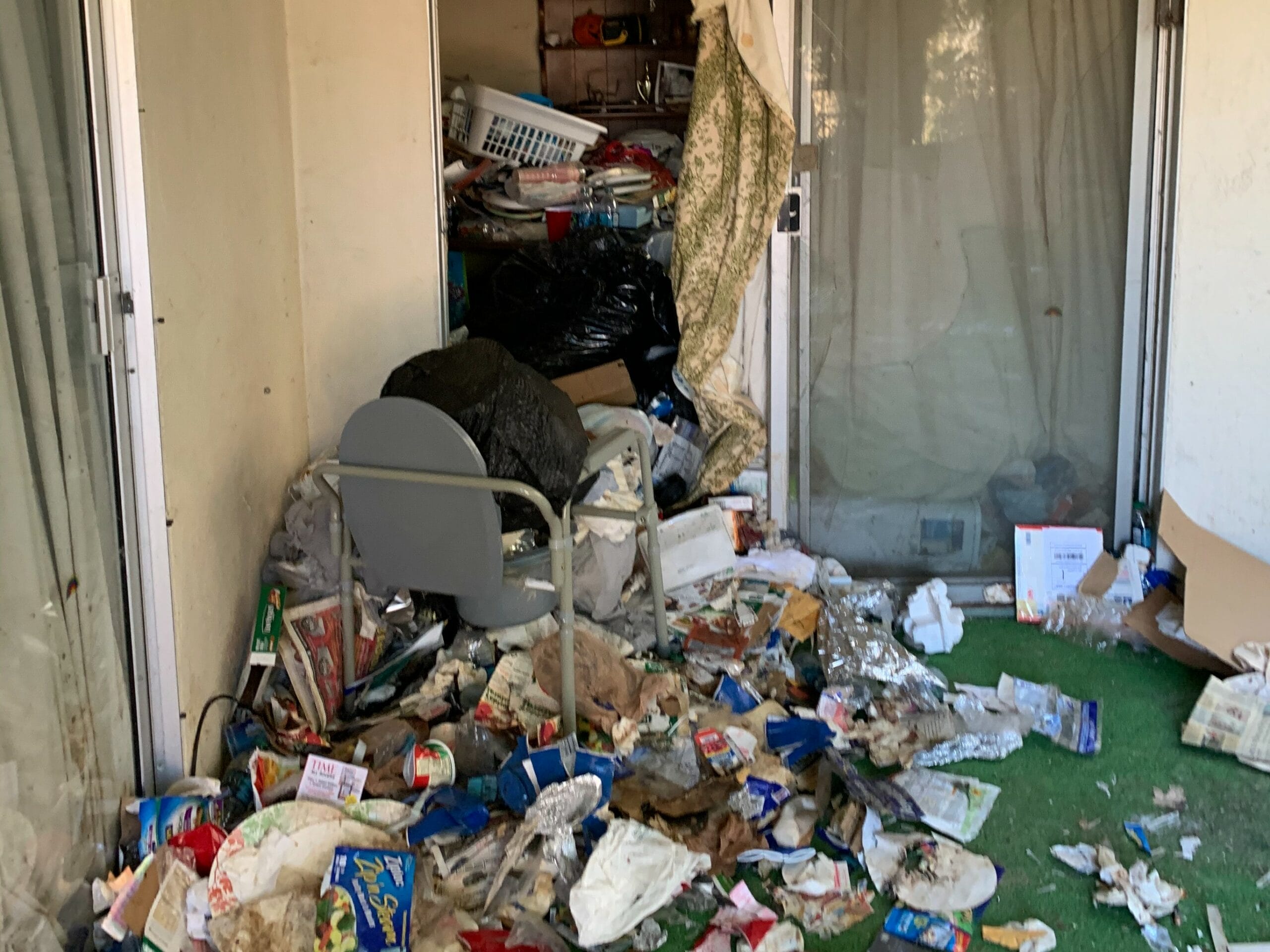
A step-by-step guide to decluttering a hoarded home is integral. It involves setting small, achievable goals, working in a specified order, and enlisting the help of professionals and volunteers who understand the unique challenges of hoarding.
Take a look at the ultimate hoarding cleanup checklist made by our friends at Bio-One of Oceanside: 4-Step Plan For a Successful Hoarding Cleaning with Bio-One.
While the cleanup is a critical step, true restoration involves addressing the root causes of hoarding. This requires a focus on mental health treatment, support systems, and a commitment to change.
Counseling and therapy for hoarding are as varied as the reasons behind the behavior. Exposure therapy, where individuals are gradually exposed to the anxiety-provoking situation of discarding items, has shown promising results. Other forms of therapy, including group settings, tackle the disorder from different angles, providing techniques for managing stress and emotions.

Support groups offer a unique space where hoarders and their families can share experiences, lean on each other, and learn from those who have walked the path to recovery. These networks reduce the sense of isolation and help to break the cycle of shame.
From self-help books to online resources, there is a wealth of information available for those pursuing recovery. The key is to find resources that resonate and to approach the process with openness and a willingness to learn and change. Here are some valuable resources to get you started on the journey to recovery:
While no definitive cure for hoarding exists, individuals can recover and learn to manage the condition effectively. They may encounter setbacks on the journey to recovery, but through commitment and support, they can make progress toward a life free of clutter.
It's important to remember that hoarding is not just about cleaning up and decluttering physical spaces. It's also about understanding and addressing the underlying psychological and emotional factors that contribute to the behavior.
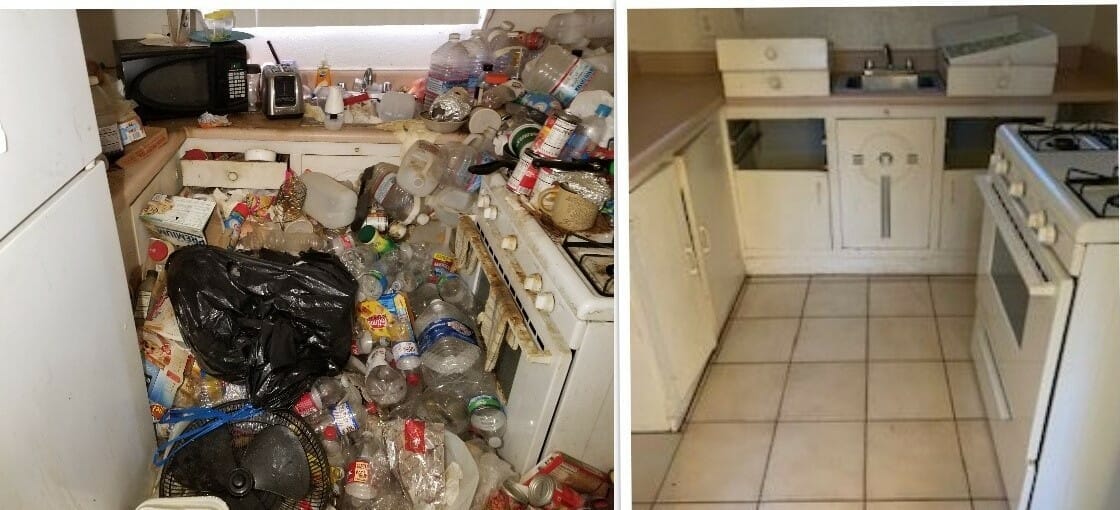
In cases where hoarding has resulted in significant biohazards, it's important to seek the help of a professional cleanup company like Bio-One of Poway. Our team can handle these situations with compassion and discretion. With the right treatment and support, hoarding can be managed. So, don't lose hope, recovery is possible, and help is just a call away!
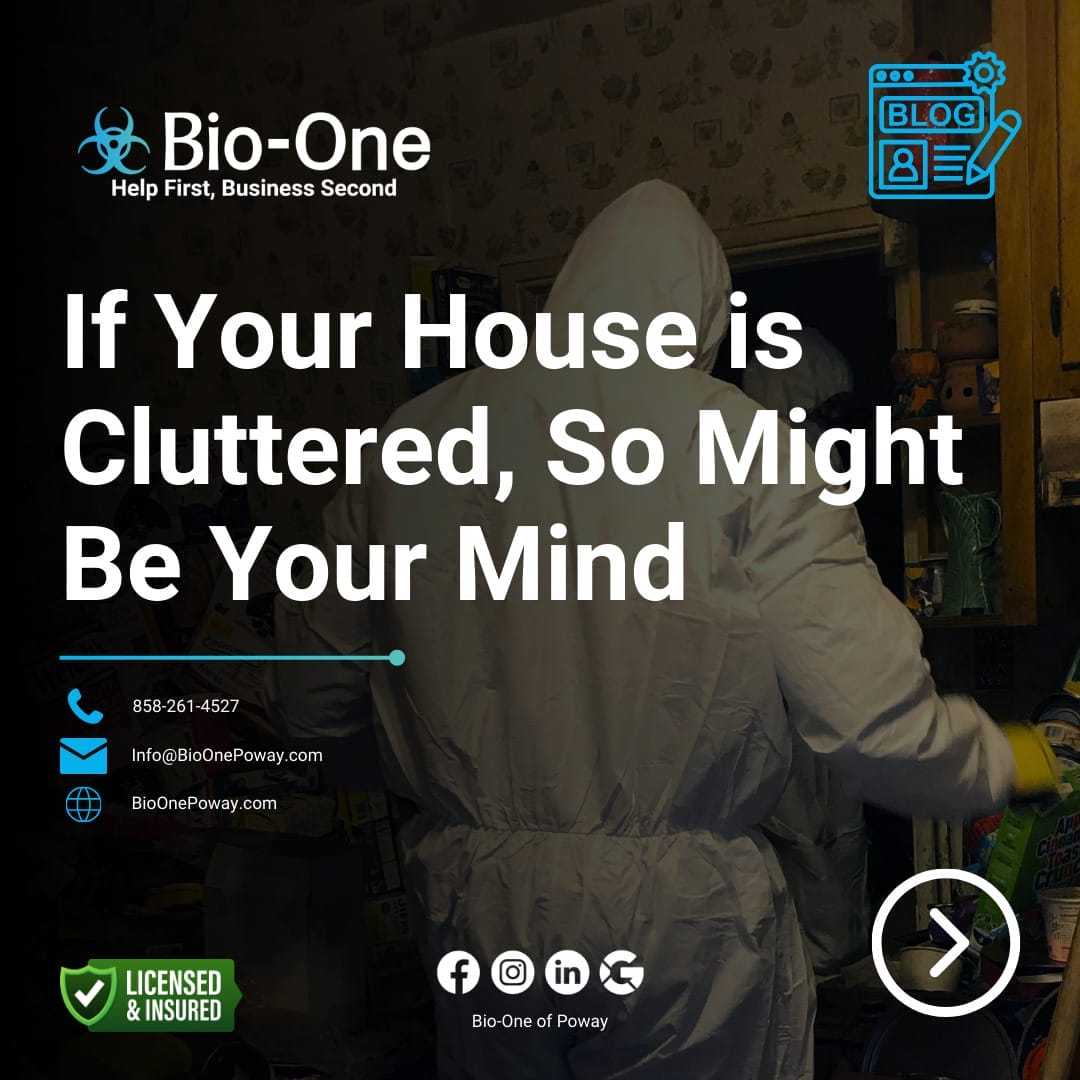
The saying "out of sight, out of mind" may ring true when it comes to a cluttered home and a chaotic mind. Many people underestimate the impact that physical clutter can have on their mental state. A cluttered living space can cause feelings of overwhelm, stress, and even anxiety. In this blog post, we will explore the connection between a cluttered house and a cluttered mind, and offer tips on how to declutter both for a more organized and peaceful life.
The phrase "out of sight, out of mind" is often used to describe situations where we tend to forget about something if it's not visible or present in our daily lives. When it comes to a cluttered house and a cluttered mind, this saying couldn't be more accurate. Physical clutter can make it difficult for us to focus, relax, and function effectively. Let's take a deeper look at how this happens.
Clutter in our living space can serve as a constant reminder of the things we need to do or deal with. Whether it's unfinished projects, unopened mail, or piles of laundry, these items can create a sense of overwhelm and stress, adding to our mental load. Not only that, but clutter can also be visually distracting and troublesome, which ultimately makes it more difficult for us to concentrate on the task at hand. All of these factors contribute to a cluttered mind.

On the other hand, a clutter-free home can have significant benefits for our mental well-being. It creates a sense of calm, reduces stress, and promotes a more positive and productive mindset. When our environment is organized, we can easily find what we need, make decisions more efficiently, and feel in control of our surroundings.
Now that we understand the connection between a cluttered house and a cluttered mind, let's explore some practical tips for decluttering our space and promoting a more peaceful and productive environment.

In addition to the tips mentioned above, working with a professional decluttering and organizing service like Bio-One of Poway can greatly benefit your decluttering journey. Our team specializes in decluttering and deep cleaning services for both residential and commercial spaces.
Some ways Bio-One of Poway can help with decluttering include:
Our goal is to help create a space that brings value and peace to your life, rather than adds unnecessary clutter. Contact us today to learn more and start your decluttering journey.

Hoarder houses typically have excessive clutter and debris, making them almost impossible to navigate in. The accumulation of junk, papers, clothes, and other items is a breeding ground for bacteria, dust, and pests that can become health hazards. However, the dangers do not end there. In this blog post, we will reveal the pernicious dangers that lurk in hoarder houses and how remediation technicians at Bio-One can handle these cleanups.

Moisture from incidents such as water damage, pipe leaks, and spills, can go unnoticed in hoarder houses. It provides an ideal environment for mold growth, which may result in respiratory issues. When Bio-One of Poway remediates hoarder houses, we ensure that mold testing and remediation is one of their highest priorities. We are Micro-certified mold remediation inspectors and contractors!
Rodents and other pests thrive and multiply in hoarder houses. They can cause severe damage to the property and pose a threat to the health of those who enter the premises. Rats, mice, cockroaches, and other pests carry diseases and bacteria that can spread throughout the house. At Bio-One of Poway, we have experts trained in cleaning up and removing animal waste to eliminate infestations safely.
The sheer weight of clutter in hoarder houses can cause structural damage over time. Piles of items can place excessive stress on the floors and walls, leading to cracking or collapse. This danger is not only limited to the hoarders themselves but also to any visitors or emergency responders who may enter the house!
Cluttered spaces are at a higher risk of fire hazards. Flammable items, such as paper and chemicals, can quickly catch fire and spread throughout the house. In hoarder houses, these risks are heightened due to blocked exits and narrow pathways that make it difficult for firefighters to enter the premises in case of an emergency.

Electrical hazards are also common in hoarder houses, as electrical outlets may be overloaded with extension cords and overloaded power strips. Additionally, clutter can easily block or cover heating vents, increasing the risk of fire or carbon monoxide poisoning.
Image by partystock on Freepik
The clutter in hoarder houses creates physical hazards for anyone who may enter or try to move around the property. People can trip or fall, and stacks of items like old newspapers or magazines can collapse and cause injury. We are prepared to move and manage bulky items, such as furniture, in order to create a safe and accessible living space.

In extreme hoarding situations, animal feces and urine may be present on the property. It can cause serious health issues such as E. Coli and Salmonella infections. Human bodily fluids are also a potential threat and have the potential to carry harmful diseases. We handle disposal with care and ensure the safety of everyone involved.
Hoarding not only poses physical and health hazards but also has a significant emotional weight. Hoarding is often linked to mental health issues, which exacerbates the situation for the hoarder and their loved ones. The process of decluttering and cleaning can be overwhelming and emotional, which is why our team at Bio-One of Poway approaches each case with empathy and understanding.
At Bio-One of Poway, we understand the sensitive nature of hoarding situations and the impact they can have on individuals and families. As a Mental Health First Aid-certified company, we can recognize and support those in need of mental health resources. We approach each case with compassion, respect, and a commitment to helping our community through the hoarding cleanup process.


Hoarding disorder is characterized by persistent difficulty discarding or parting with possessions due to a perceived need to save them. Those suffering from the disorder often experience distress at the thought of getting rid of items, leading to an excessive accumulation of items, regardless of value, that congests and clutters living areas. While the reasons for hoarding are not the same for everyone, it can cause significant distress and impairment in social, occupational, and other important areas of functioning.
According to the American Psychiatric Association, "Hoarding disorder occurs in an estimated 2 to 6 percent of the population and often leads to substantial distress and problems functioning." The common reasons for hoarding include:
One of the most common reasons for hoarding is trauma. Many hoarders have experienced some form of trauma or loss in their lives, which has led them to find comfort in accumulating possessions. The hoarded items may hold sentimental value for the individual, reminding them of happier times or loved ones lost. Alternatively, they may fear a repeat of their traumatic event and hoard items as a way to protect themselves.
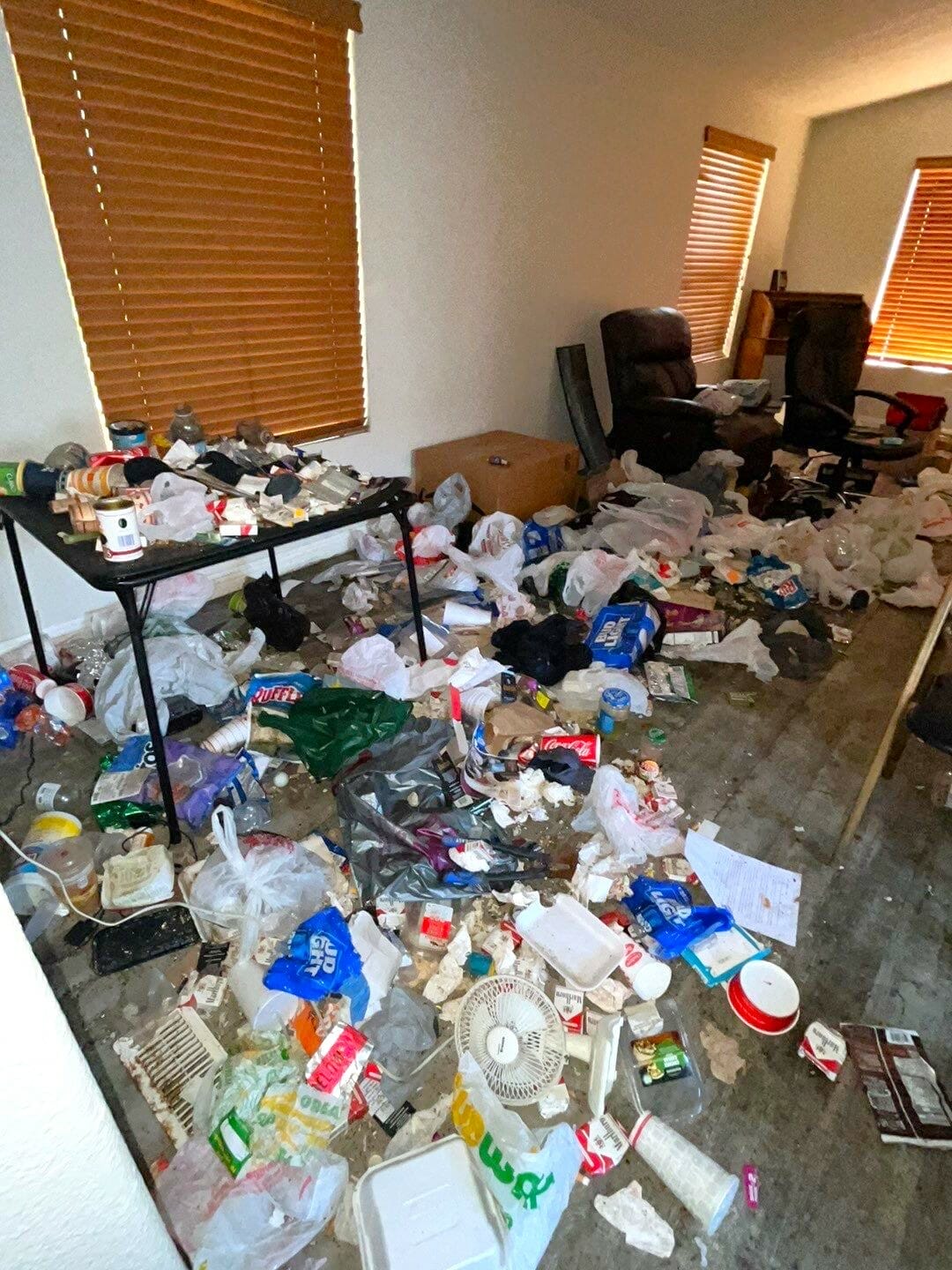
Another common reason for hoarding is anxiety and OCD. Hoarders may experience high levels of anxiety when faced with the prospect of throwing away their possessions. They may have obsessive thoughts or fears about discarding things and feel compelled to collect more and more items to control their anxiety. Interestingly, hoarding can also be a symptom of Obsessive Compulsive Disorder (OCD), a mental health condition that causes individuals to experience unwanted, intrusive thoughts that lead to repetitive behaviors and compulsions.
Perfectionism is also a common reason for hoarding. Hoarders may be perfectionists who struggle with the idea of disposing of anything they perceive as potentially useful or valuable. They may worry that they'll need the item someday, or that the item will be costly to replace if it's thrown away. In some cases, perfectionism can be an attempt to avoid feelings of shame or failure that may arise from not maintaining an orderly home or workplace.
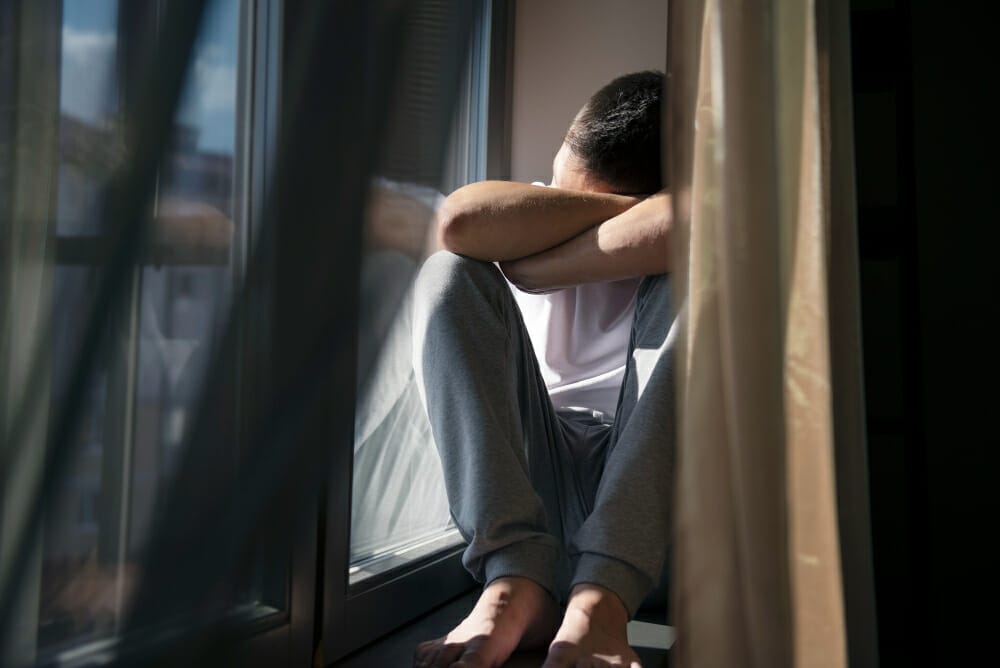
Depression is one of the most common reasons for hoarding. Individuals may feel overwhelmed and unable to take care of themselves, which leads them to neglect their environment. Depression can also make it hard to make decisions or take action, which can lead to hoarding behaviors.
A family history of hoarding is also a contributing factor. Studies suggest that genetics can play a role in hoarding behaviors, and growing up in a household where hoarding is present can make individuals more likely to develop hoarding tendencies. Children who grow up in homes with hoarders may not learn how to organize or handle possessions in a healthy way, which can make them more prone to hoarding as adults.
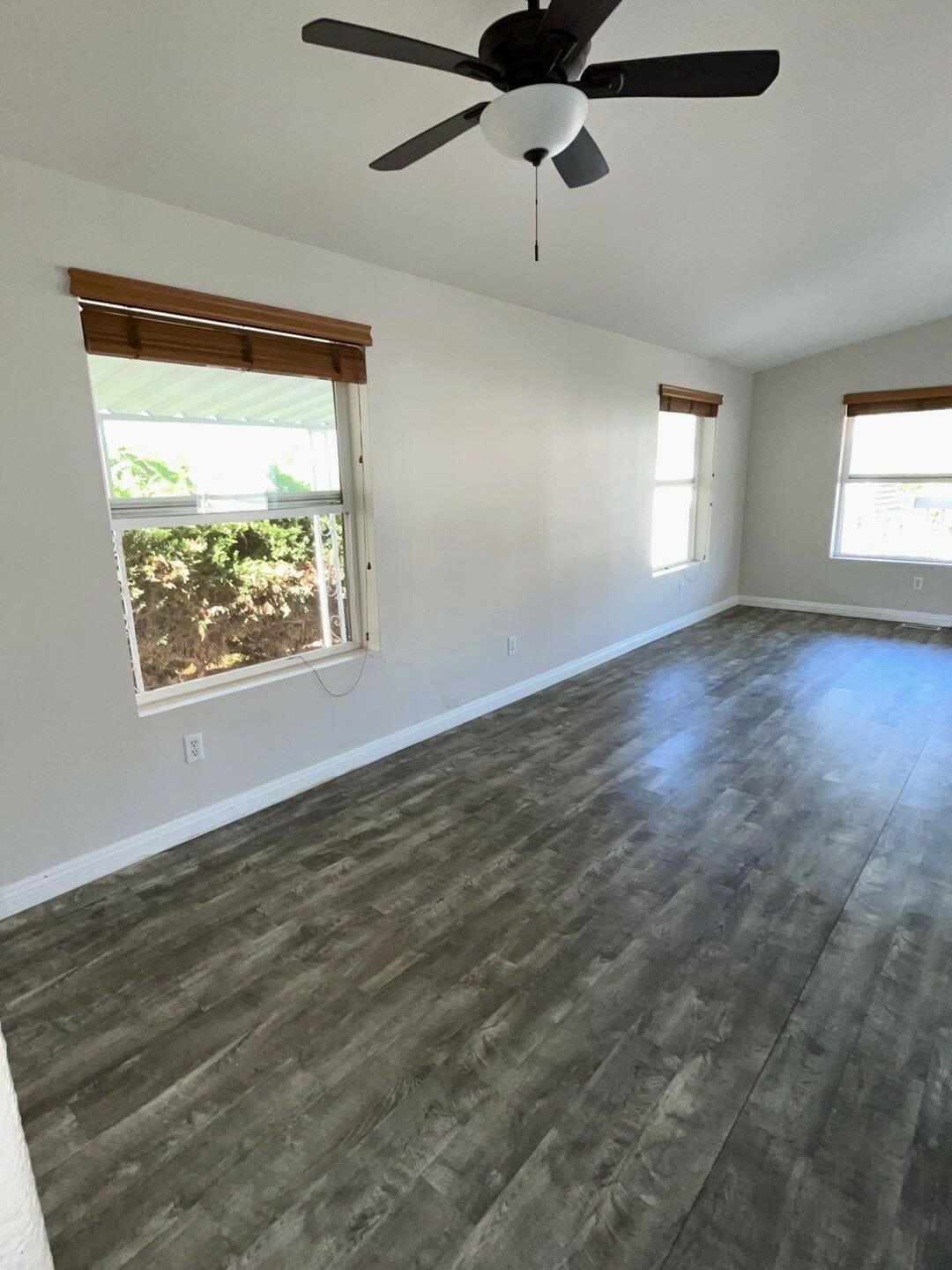
There are many reasons for hoarding, and it's a condition that requires empathy and understanding to overcome. Hoarding can be a difficult and isolating condition, but it is treatable. Identifying the underlying reasons for hoarding is the first step towards recovery.
If you or a loved one is struggling with hoarding, Bio-One offers professional hoarding remediation services. Our highly trained team is equipped to handle any hoarding situation with compassion and discretion. Don't hesitate to call if you or someone you know is struggling with clutter or any form of hazardous environment!
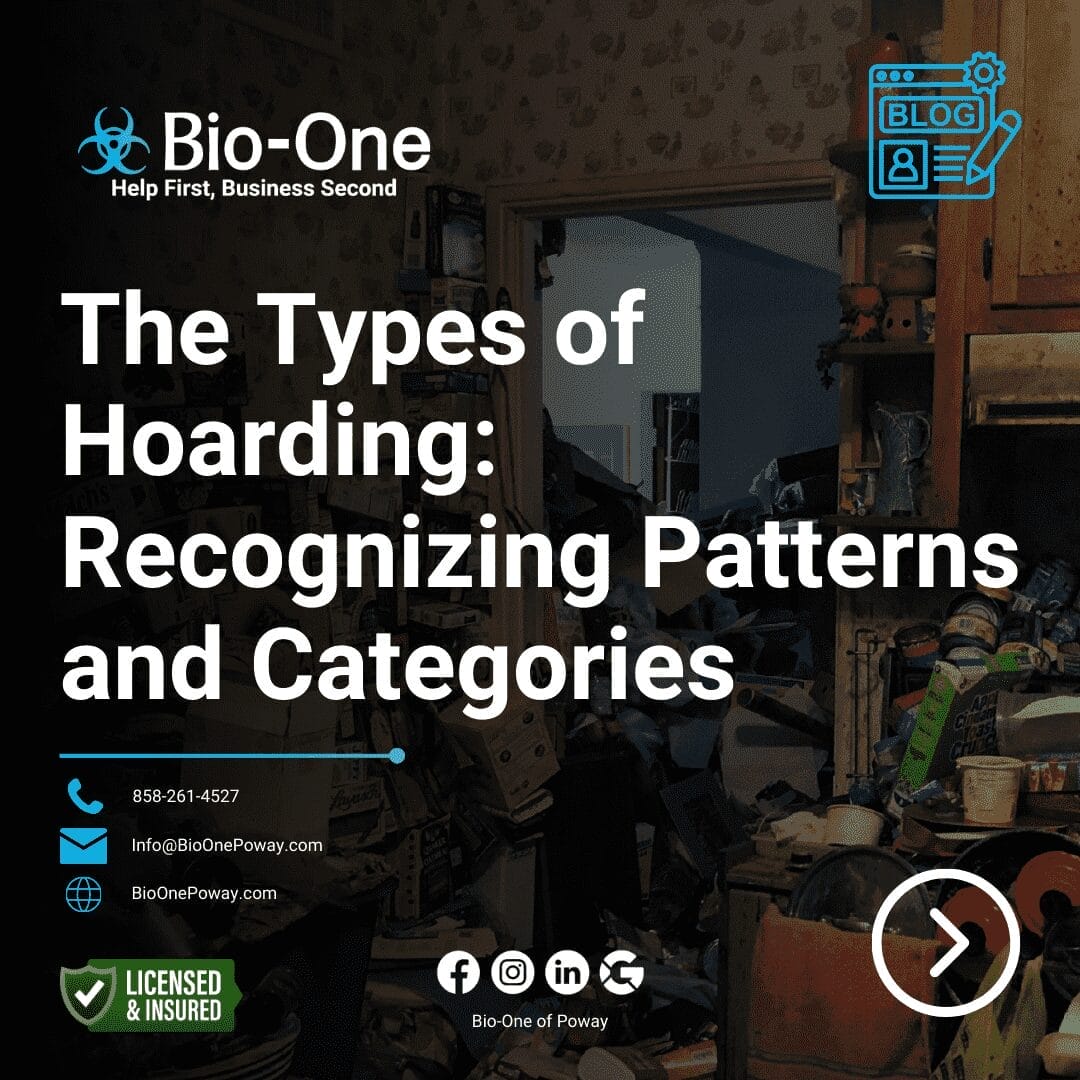
Hoarding is a serious mental health condition that usually results in poor quality of life, safety hazards, and isolation. There are different types of hoarding, ranging from mild to severe, and recognizing the patterns and categories can help in understanding the underlying issues and providing appropriate support. In this blog post, we'll discuss the different types of hoarding and explore the risk factors associated with each type.
Collecting hoarding is the most common type of hoarding. This involves the accumulation of a large number of items, usually of a particular category, such as books, clothing, or kitchenware. This type of hoarding often starts innocently enough as a hobby or interest but can quickly escalate into a problem.
Individuals with collecting hoarding often have a strong emotional attachment to their items and feel a sense of security and comfort in being surrounded by them. The risk factors associated with collecting hoarding include anxiety, depression, social isolation, and a history of trauma.

The second type of hoarding is squalor hoarding. This hoarding manifests through the accumulation of a massive amount of trash, garbage, and debris. This situation can often lead to severe health problems, including respiratory issues and exposure to harmful chemicals. Individuals with squalor hoarding may struggle with depression, anxiety, and other mental health conditions. They may also have a history of substance abuse or neglect.
Animal hoarding is another type of hoarding, which involves the excessive and uncontrolled accumulation of animals. Individuals with animal hoarding have a compulsive need to rescue animals, even if they are unable to provide adequate care for them.

This type of hoarding poses significant health risks to the animals and humans involved. Individuals with animal hoarding may struggle with depression, anxiety, and a history of trauma.
Hoarding disorder requires specialized treatment. Some effective treatments include cognitive-behavioral therapy (CBT), which helps individuals identify and change their hoarding behaviors, and motivational interviewing, which can help individuals explore the underlying motivations for their hoarding behavior.
Other types of therapy, like exposure and response therapy, have also proven to be effective in treating Hoarding Disorder. This therapy involves gradually exposing individuals to the objects they are hoarding and helping them develop healthy responses to their distress.
In addition to therapy, medication can also help manage symptoms of Hoarding Disorder.

Recognizing the types of hoarding is essential in understanding the risks involved and the level of hoarding remediation needed. If you or someone you know is struggling with hoarding disorder, please reach out to Bio-One for help. Our experienced team can assist in restoring the living space to a safe and healthy environment, providing support through the entire process. Remember, there is no shame in asking for help, and Bio-One is here to assist you in your time of need.

The words “hoarding” and “clutter” are often used interchangeably, but they are not the same thing. Clutter is the accumulation of everyday items that are not organized or put away in their appropriate place. Hoarding, on the other hand, is much more severe and can become a severe psychological disorder. In this blog, we will define the differences between hoarding vs. clutter to help you understand the key distinctions between the two as well as the potential health implications of hoarding disorder.
Clutter might feel overwhelming and disorganized, but the accumulation is generally confined to storage spaces and surfaces. It may be frustrating to clean, but it is not a reflection of underlying psychological health. On the other hand, for those with hoarding disorder, the accumulation of belongings can become dangerously severe to the point where someone’s living conditions become unmanageable.
Hoarding is a potentially serious psychological disorder that typically requires professional intervention. Hoarding disorder is not just a matter of being untidy or messy. It is characterized by several features, including an acquired difficulty to get rid of things, excessive saving and accumulating even if cluttered living conditions have become life-threatening, and frequent dilemmas about getting rid of items. The most common signs of hoarding behavior include:
Clutter is more of a lifestyle issue than an issue with mental health. It means that the accumulation of items is usually manageable, and it typically does not interfere with daily life.

Professional hoarding cleanup services should not be confused with daily house cleaning services or general home organization services. Hoarding cleanup services are provided by licensed professionals who are trained to deal with the complex and intricate issues surrounding hoarding disorder. Hoarding cleanup includes sorting, removing, and disposing of items with compassion and understanding for the individual's needs.
Anyone who may be dealing with hoarding disorder should seek professional help. Hoarding and clutter can have serious health implications, including increased risk of falls, fire hazards, exposure to mold and bacteria, and other infectious hazards. It is vital to understand the difference between hoarding and clutter to seek professional assistance that provides an empathetic approach while ensuring the safety of everyone involved.

In conclusion, distinguishing between clutter and hoarding is essential in identifying the appropriate support and services you or your loved one might need. Having a cluttered home may be frustrating, but it should not be something that interferes with your daily life. However, when the accumulation of belongings becomes severe to the point of potentially becoming a dangerous living condition, it could be a sign of a hoarding disorder.
Professional hoarding cleanup services and psychological support could be the best solution for those struggling with hoarding disorders. We are available 24/7 to help!